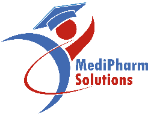Signal Management
Signal management is a crucial aspect of pharmacovigilance, playing a vital role in the ongoing evaluation of drug safety profiles. It involves the systematic detection, assessment, and interpretation of signals, which are potential safety concerns associated with a pharmaceutical product. These signals may arise from various sources, including adverse event reports, scientific literature, and clinical trial data.

Program Highlights

Modules-
20

HRS of Learning-
200+

Weeks -
6

FAQs-
250+

Real World Scenarios-
100+

Program Overview
The Signal Management in Pharmacovigilance program is designed to equip participants with the specialized knowledge and skills necessary for the systematic detection, assessment, and interpretation of potential safety signals associated with pharmaceutical products. Through a combination of theoretical instruction and hands-on training, participants will become proficient in signal detection methodologies, data analysis techniques, and benefit-risk assessment.
Program Objectives
- Provide a comprehensive understanding of the importance of signal management in ensuring drug safety and patient well-being.
- Train participants in identifying potential safety signals through the analysis of adverse event reports, aggregated safety data, and scientific literature.
- Equip participants with the skills to utilize statistical methods and data mining techniques for signal detection and pattern recognition.
- Instruct participants on the assessment of potential safety signals, considering factors such as dose-response relationship, temporal association, and biological plausibility.
- Provide skills in conducting a thorough benefit-risk assessment for pharmaceutical products, taking into account identified or potential safety signals.
- Ensure participants understand the documentation requirements and reporting obligations for identified signals, in compliance with regulatory standards.
- Train participants in effectively communicating identified signals to healthcare professionals, patients, and other stakeholders, promoting informed decision-making.
- Emphasize the importance of quality control measures to ensure accuracy and reliability in the signal management process.
- Provide insights into the ongoing nature of signal management, emphasizing the need for continuous vigilance and improvement.
- Instructional Methods: Lectures, Case Studies, Workshops, Group Discussions, Hands-On Exercises, Data Analysis Activities
- Quizzes and Knowledge Checks
- Case Study Analysis and Presentation
- Practical Exercises (e.g., Signal Detection, Benefit-Risk Assessment)
- Final Exam or Capstone Project

Target Audience
- Medical graduates with MBBS, MD, DO, Ph.Ds',
- Dental graduates with BDS, MDS, DMD, DDS
- Pharmacy graduates with B.Pharm, PharmD
- Ph.D
- Nursing graduates with RN, BS, LPN
- Majors in Biological Sciences/Life Sciences/allied health fields.
- Pharmaceutical Quality analysts
- Microbiology, Biochemistry, Organic Chemistry and Biotechnology students
.
- Health Informatics
- Regulatory affairs
- Medical Affairs
- Clinical Research
- Clinical Data Management or Data sciences
- Clinical Trial Management
- Quality Assurance
- Quality Control
- Pharmacovigilance and Drug Safety

Certification
Upon successful completion of the program, participants will receive a Certificate in Signal Management in Pharmacovigilance, demonstrating their proficiency in detecting, evaluating, and interpreting potential safety signals associated with pharmaceutical products.
Program Curriculum
Designing a comprehensive curriculum for a Signal Management program involves structuring a course that covers key theoretical concepts and provides hands-on training in practical skills. Here's a suggested outline for a Signal Management program:

- Definition and Significance of Signal Management
- Role in Pharmacovigilance and Drug Safety Surveillance
- Regulatory Framework and Reporting Obligations
- Spontaneous Reporting Systems
- Data Mining and Statistical Signal Detection
- Data Sources for Signal Detection (e.g., Adverse Event Reports, Literature)
- Principles of Causality Assessment
- Application of Bradford Hill Criteria
- Considerations for Causality in Signal Management
- Bayesian Data Mining
- Proportional Reporting Ratios (PRRs)
- Reporting Odds Ratios (RORs)
- Bayesian Data Mining Algorithms (e.g., BCPNN)
- Criteria for Signal Evaluation
- Strength of Evidence in Signal Assessment
- Prioritization and Triage of Signals
- Framework for Benefit-Risk Evaluation
- Incorporating Signal Information into Benefit-Risk Analysis
- Decision-Making based on Benefit-Risk Profile
- Requirements for Signal Reporting to Regulatory Authorities
- Signal Management Plans (SMPs)
- Documentation and Archiving of Signal Assessment
- Effective Communication of Identified Signals
- Stakeholder Engagement Strategies
- Risk Communication in Pharmacovigilance
- Quality Control Measures in Signal Management
- Audits and Inspections in Signal Management
- Continuous Improvement and Process Optimization
- Use of Artificial Intelligence and Machine Learning
- Big Data Analytics in Signal Detection
- Future Trends and Innovations in Signal Management
- Hands-On Signal Detection and Evaluation
- Case Study Analysis and Presentation
- Simulation of Signal Management Scenarios
- Patient-Centric Approach in Signal Assessment
- Balancing Patient Safety with Benefit-Risk Profile
- Ethical Dilemmas in Signal Management
- Quizzes and Knowledge Checks
- Case Study Analysis and Presentation
- Practical Exercises (e.g., Signal Detection, Benefit-Risk Assessment)
- Final Exam or Capstone Project
- Guest Lectures from Industry Experts
- Mock Signal Management Scenarios
- Regulatory Affairs and Compliance Workshops
Career Paths
Pharmacovigilance, as a critical aspect of drug safety, offers a range of career opportunities. Here are some common career paths in Pharmacovigilance:
- Responsibilities: Collect and evaluate adverse event reports, ensure compliance with regulatory requirements, and manage safety databases.
- Skills Needed: Attention to detail, knowledge of regulatory guidelines, strong organizational skills.
- Responsibilities: Assess and evaluate adverse event reports for causality and seriousness, provide medical expertise in safety assessment.
- Skills Needed: Medical background (e.g., PharmD, MD), clinical knowledge, analytical skills.
- Responsibilities: Oversee pharmacovigilance activities, ensure compliance with regulatory requirements, lead safety teams.
- Skills Needed: Leadership, regulatory knowledge, project management skills.
- Responsibilities: Develop and implement risk minimization strategies, conduct benefit-risk assessments, and oversee risk management plans.
- Skills Needed: Risk assessment, regulatory knowledge, communication skills.
- Responsibilities: Ensure compliance with quality standards, conduct audits and inspections, implement quality management systems.
- Skills Needed: Quality assurance knowledge, auditing skills, attention to detail.
- Responsibilities: Liaise with regulatory authorities, ensure compliance with pharmacovigilance regulations, and support regulatory submissions.
- Skills Needed: Regulatory knowledge, communication skills, attention to detail.
- Responsibilities: Analyze safety data to identify potential signals, perform benefit-risk assessments, and contribute to risk management strategies.
- Skills Needed: Analytical skills, statistical knowledge, pharmacovigilance expertise.
- Responsibilities: Conduct safety assessments in clinical trials, contribute to study protocols, and provide safety-related guidance.
- Skills Needed: Clinical research knowledge, medical background, analytical skills.
- Responsibilities: Provide training on pharmacovigilance principles, regulatory requirements, and case processing procedures.
- Skills Needed: Communication skills, knowledge of pharmacovigilance practices.
- Responsibilities: Offer specialized pharmacovigilance services to pharmaceutical companies, regulatory agencies, or research organizations.
- Skills Needed: Expertise in pharmacovigilance, business acumen, networking skills.
- Responsibilities: Analyze safety data, perform statistical analyses, and generate safety reports.
- Skills Needed: Statistical knowledge, data analysis skills, pharmacovigilance expertise.
- Responsibilities: Manage pharmacovigilance databases and IT systems, ensure data integrity and security.
- Skills Needed: IT skills, database management knowledge, attention to detail.

Remember, these career paths often have room for advancement, specialization, and crossover into related fields like regulatory affairs, clinical research, or quality assurance. Continuous learning and staying updated with industry trends and regulations are crucial for success in Pharmacovigilance.
